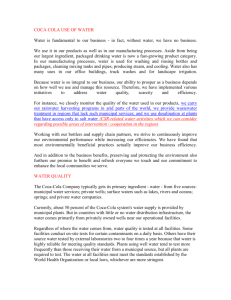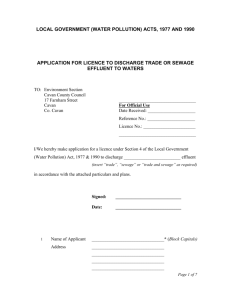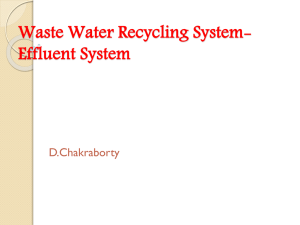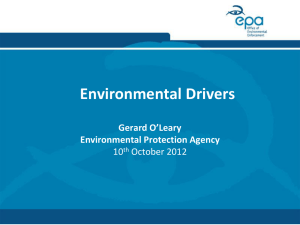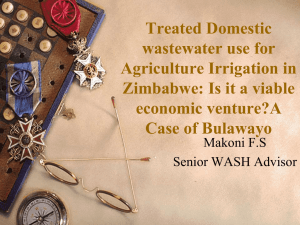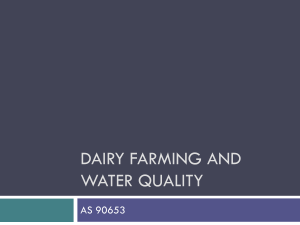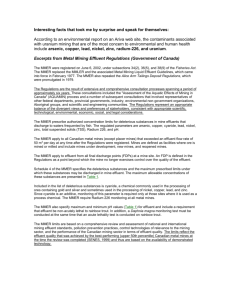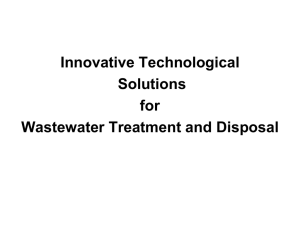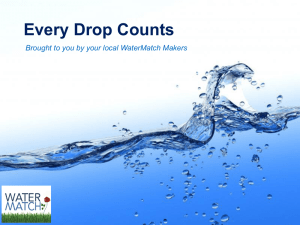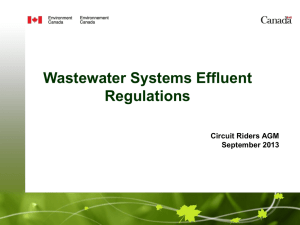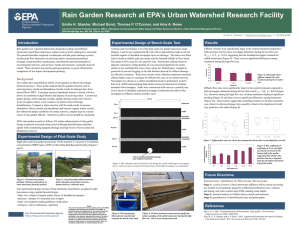Wastewater Treatment
advertisement
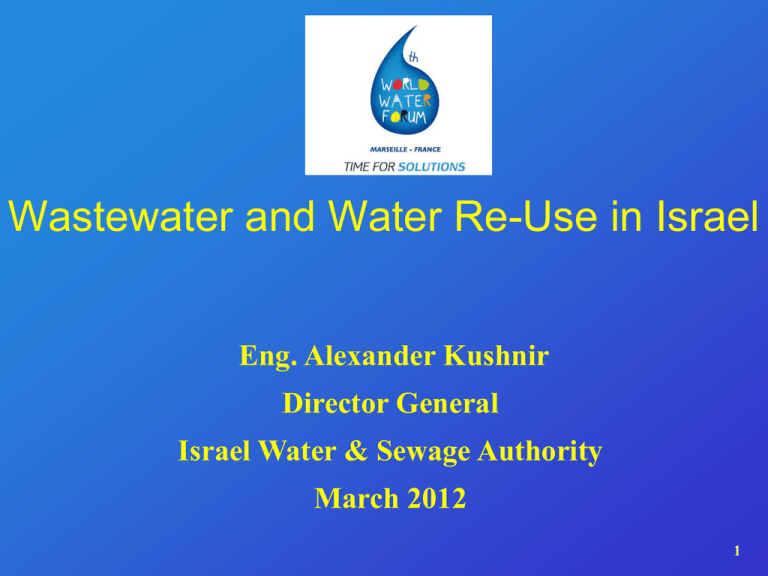
Wastewater and Water Re-Use in Israel Eng. Alexander Kushnir Director General Israel Water & Sewage Authority March 2012 1 Overview • Israel’s Water Challenges • Nation-Wide Domestic Wastewater Treatment and Re-Use in Agriculture • Next steps • Conclusions 2 Challenge: Minimizing the gap between supply and demand • Israel is located in an arid region of the world. • Continuous nation-wide efforts and innovations have played a vital role in minimizing overconsumption. • By responding to the unavoidable challenges of water scarcity, Israel has become one of the world leaders in water conservation 3 Challenge: Providing Consistent, Sustainable National Water Supplies Key Historical Innovations: 1960’s – Construction of the National Water Grid: transports water from the Sea of Galilee southwards, irrigating the Negev desert. 1980’s – Droughts and increasing water demands – Initiated re-use of domestic effluent for irrigation 2000 – Droughts and further increases in water demands – Initiated large scale seawater desalination Throughout the Past, Present, Future: Improvements in water use-efficiency in all sectors. This includes new methods of reducing water demands and water losses. 4 Towards a sustainable balance Added Supplies: • Large-scale re-use of treated wastewater in agriculture and other sectors is the biggest step towards sustainable water-use. • Decreasing future desalination requirements Allocations for Nature: • Preserve natural water resources • Preserve water for the environment 5 Challenge: Managing the Quality and Nation-Wide Distribution of Israel’s Many Unique Water Supplies • Sea of Galilee and Watershed • Fresh water aquifers • Brackish water aquifers • Storm water • Effluent (treated domestic wastewater) • Desalinated water • Greywater - Future increases in the safest, most economical way. Each of these originates in different locations, has different quality-levels, & has different energy-requirements for supply. 6 Challenge: Water Shortages in Agriculture Innovations: • Irrigation with domestic effluent • By 2016: Increase the proportion of tertiary or tertiaryplus level effluent to 90%, to enable its unlimited irrigation. • Advanced irrigation systems (eg. drips released immediately beside the roots) • Maximize use of storm water • Crop tolerance of: brackish water, minimal water The most cost-effective water-energy balance is obtained by using these methods of reducing demand and re-using 7 resources. 90 80 Effluent Quantity for Irrigation: Percent of National Effluent Used 80 70 60 % 50 40 30 20 10 0 17 10 8 5 1 1 Next Steps (Improvements Within 5-7 Years): Israel will increase use of the total national effluent produced each year from 80% to 90% 8 Effluent-Quality for Irrigation Currently: Monitor and ensure all quality parameters to prevent any potential long-term harm. Reduce salts by combining desalinated water with natural potable water. Results: higher effluent quality higher plant yield & lower water requirements Next Steps (Improvements Within 5-7 Years): Raise effluent quality from secondary to tertiary to increase tertiary-level effluent from 36% to 90%. 9 National Consumption: Agricultural Sector 1600 2050 1400 2010 350 (26%) 1000 500 (48%) 400 (38%) 2030 100 (7%) 2025 2020 2015 2010 2000 1995 1990 1985 1980 1975 1970 1965 0 2005 144 (14%) Year If effluent were not used in agriculture, desalinated water production would be required (a more costly alternative) to supply the agricultural sector’s needs. 2050 200 2035 400 900 (67%) 2045 Potable Effluent Brackish 600 2040 800 1960 MCM/yr 1200 Increasing Proportion of Effluent in Agricultural Consumption Currently, effluent provides ~38% of the water used for agriculture in Israel ….and plans are to increase this to 67% by the year 2050 11 Next Steps: Improvements in Wastewater Purification & Re-Use in the Next 5-7 Years Quantity – Increasing the total percentage of reused effluent from 80% to 90% Quality - Upgrading tertiary-quality effluent from 36% to 90% 12 Options in Effluent Management Effluent Re-Use Systems – National, Regional, Local Tariffs – True cost, Government subsidy, Cross-Sector Financing Maintenance – Government, Private, Both 13 Conclusions • Water shortages have led to national-level innovations in water conservation, re-use, and desalinated supplies. These have made Israel one of the world’s leaders in water use. • The Israeli model can provide assistance to the global community; not only to arid countries. • The most cost-effective methods have been used to reduce water demands and re-use resources. • Nation-wide use of effluent provides almost 40% of the agricultural sector’s water. • During the coming 5-7 years, effluent that is used in the agricultural sector will increase in both quantity (use of 90% of all effluent ) and quality (90% treated at tertiary-level) 14 Thank you ! Don’t Waste Your Waste! 15

